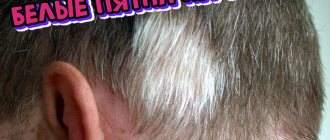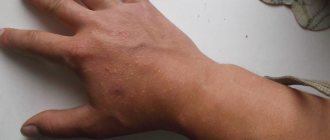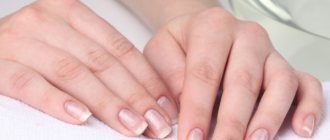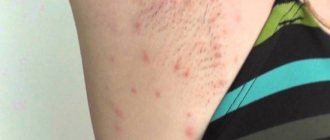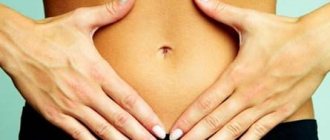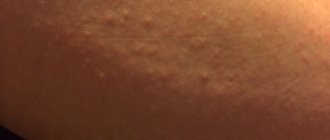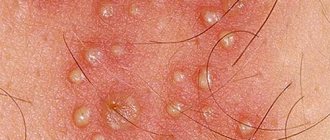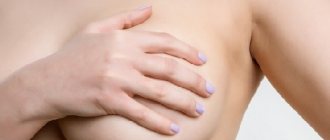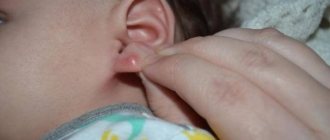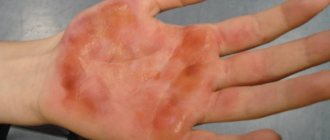Alternative Methods
Used in especially severe cases.
Photochemotherapy
Comprehensive approach:
- taking special drugs that create fluorescence, psoralens orally;
- exposure to a prescribed dose of UVA.
Depending on the severity of the disease, different treatment regimens are used. They all come down to two phases: cleansing (2-3 sessions per week until symptoms disappear) and maintenance (once a week for a month, can be extended at intervals of once a month).
Laser therapy (physiotherapy)
Prescribed as an additional means of combating dandruff. The treatment is carried out with a laser beam that focuses photons (low intensity light). Photons improve blood circulation and help activate enzyme metabolism, resulting in the restoration of damaged tissue.
Plasmolifting (plasmotherapy)
The procedure involves subcutaneous injections obtained as a result of processing the patient’s blood in a special centrifuge (obtaining plasma rich in platelets and active components). It not only relieves dandruff and itching, but also helps with other hair problems (loss, weakened condition, etc.).
Plasmolifting has a number of contraindications, which include:
- allergy to anticoagulants;
- chronic or acute diseases;
- menstruation period;
- presence of tumors, hematomas;
- autoimmune diseases;
- pregnancy and lactation.
Vitamin therapy
Recommended for vitamin deficiency resulting in dandruff. The complex of vitamin preparations must include vitamins and microelements: A, F, E, B (1–6, 8, 9, 12), H, C, selenium.
Getting rid of crusts
No matter how terrible this problem is, treatment should help at any stage of this disease. Therefore, take on this task with confidence.
Medical assistance
Crusts on the scalp in adults may indicate a serious fungal disease. Subsequently, if the disease is not treated, you can lose your hair or even introduce an infection into the blood. No one is immune from this development of events, so if strange symptoms appear, always consult a doctor. After a thorough examination and analysis, the specialist will prescribe for you:
- ointments;
- shampoo;
- antibiotic (in particularly difficult cases).
The ointment prescribed is usually antifungal. It can suppress the development of mycospores. It should be applied using a disposable cotton sponge. Thus, fungal colonies on the surface of the skin will begin to decrease, inflammation will subside, and itching will calm down.
Medicated shampoo is also a good remedy. But remember that you need to use it often to achieve the effect. Try washing your hair with it every other day.
Sometimes seborrheic dermatitis develops rapidly. It can pose a threat to the health of the entire body. In such cases, antibiotics are prescribed. The doctor may choose antibiotic tablets or ointments. The prescription will depend on the degree of damage to the scalp.
Perhaps your dermatologist will refer you to an endocrinologist. After all, seborrhea is often caused by disruption of the sebaceous glands, which is regulated by hormones. In this case, therapy with antifungal drugs is ineffective. If you normalize hormonal levels, the disease will quickly pass. All you have to do is remove the dried crusts. Due to the fact that the causes are often endocrine, adolescents and people entering adulthood are at risk. These groups suffer from hormonal fluctuations, which may well cause seborrhea. To a certain extent, pregnant women are also at risk.
What can you do at home?
If the scalp is covered with a white crust, do not rush to rip it off, as wounds may appear. This will lead to an infection that can be very difficult to get rid of. If seborrhea is dry, spread baby cream on the crusts. Put a plastic cap on top and wrap it with a towel. It is better to do this after washing your hair with warm water. After the procedure, comb your hair thoroughly. You can even pick out some of the crusts. They should be easy to remove from the skin. After removal, carry out all preventive procedures so that seborrheic dermatitis does not return.
Removing crusts is important because they prevent treatments from penetrating into the scalp. If you remove them, the therapy will work faster and more effectively.
After you remove the crusts, pay attention to disinfecting the scalp. To do this, prepare yourself a shampoo with tea tree oil.
Take a small container, stir the ingredients there and wash your hair with the resulting mixture. (Add a couple of drops of tea tree oil to the required amount of shampoo. This will be enough for a healing effect). Treating the head in this way will help eliminate a wide variety of bacteria.
Additional measures
Treatment alone cannot permanently eliminate seborrhea in an adult. The causes of the disease also need to be removed. To do this you need:
- establish a diet;
- reduce stress levels;
- eliminate health problems.
Diet is extremely important for normalizing metabolism in the body. It also plays a role in the functioning of the immune system. If your diet is balanced, then all body functions will work as expected, and the immune system will fight fungi and harmful microorganisms. Vitamins A and E play an extremely important role in ensuring good skin and hair condition. They can be taken as a dietary supplement, but it is better to get these substances with food. Thus, their absorption will be higher. Do not forget also that the food should be hypoallergenic. Try to eat foods that you are definitely not allergic to.
Rinse your hair with herbs. This can be done after shampooing. Prepare decoctions from chamomile, string and other skin-soothing herbs.
If the crusts have formed due to severe stress, then treatment will not help unless irritating factors are excluded. Try to create a positive environment at home and worry less about work. After all, your health is at stake!
Check your immunity. If it is not active enough (a detailed immunogram will show this), start strengthening it. A strong immune system can independently fight fungi, bacteria and even stress.
Blisters - eczema in the early stages
Small blisters scattered over inflamed, swollen red areas of the skin are the first sign of incipient inflammation in the dermis. The size of the papules is often small, resembling millet grains. In rare cases, large blisters of red-pink or scarlet color are diagnosed. In most cases, the rashes are very itchy.
The papular stage of the disease is characterized by the appearance of nodules raised on plaques. It quickly develops into a vesicular process, when serous contents form in the cavity of the blisters.
The limbs are a favorite place for localization of nodular rashes. When eczema is diagnosed, blisters on the hands and feet are most often diagnosed on the phalanges of the fingers, hands, palms, feet and legs. The rash appears much less frequently on the body and face.
Lotions and cold compresses with Burov's solution are a treatment that helps narrow blood vessels and reduce inflammation. Procedures are prescribed only if the blisters do not become wet.
Eczema, crusts on the skin
This symptom appears after the weeping stage, when the blisters burst, forming pinpoint wounds from which serous exudate oozes. Erosions dry out, forming crusts on the skin. Eczema progresses to the crustose (crust) stage.
With sufficient oxygen access, the process accelerates. If crusts form against the background of microbial dermatitis with weeping, then pus may accumulate under them. Thin, greenish-yellow formations often thicken and flake off.
The main goal of treating the crusted stage is to improve local blood circulation and relieve inflammation.
Cracks and wounds due to eczema
With eczema, cracks in the hands appear in the dry form.
Tilotic eczematous dermatitis is a form of the disease in which superficial and deep fissures are one of the main diagnostic signs. Rashes, burning, redness, weeping, itching are rare complaints of patients suffering from the horny form of the pathology. The disease is more often diagnosed on the heels and palms of women during menopause.
The microbial intertriginous form of the disease also tends to form cracks against the background of weeping, hyperemia, and burning. More often, defects form in large skin folds in the armpits, groin, elbow, and less often under the knees.
When diagnosed with dry eczema on the hands, cracks most often appear in the spaces between the fingers, the inner or outer part of the fingers at their bends, where the skin is thinnest and experiences the greatest tension when moving the hand.
Linear tears come in varying depths, from small cracks on the fingers to a deep tear like a gaping wound. Eczema in such a manifestation requires careful care and immediate treatment. Wounds and lacerations not only cause pain and discomfort for the patient, reducing the quality of daily life. This is an open gate for pathogenic microorganisms that can cause bacterial infections of the epidermis and subcutaneous tissue. Bacteria trapped in a deep wound can cause blood poisoning.
Drug treatment
If you ask your doctor how to get rid of crusts, he may recommend ointment (applied with a cotton swab), shampoo (frequent washing) or a combination of these products. In particularly advanced cases, antibiotic therapy and other alternative methods are prescribed.
Sulsena
It is a favorite among other means of combating the problem. The main active component is selenium disulfide. Normalizes the condition of the skin, reduces fungal activity, normalizes the functioning of the sebaceous glands, has an exfoliating effect and restorative properties.
It is used both as a shampoo for scalp crusts and as a paste. Often both remedies are used in combination. The cost of shampoo or peeling shampoo is about 300 rubles, the paste is about 120 rubles.
Naftaderm
The main component of the ointment is Naftalan refined oil. It is used for any diseases that result in the formation of a dry crust on the head of an adult. Use twice a day for a month. The cost of the drug is within 500 rubles.
Keto plus
The active ingredients of the shampoo are zinc pyrithione and ketoconazole. Effective in the treatment of dandruff caused by Malassezia furfur (yeast microorganisms). The course of treatment depends on the type of disease and is carried out according to the scheme. The cost of Keto Plus ranges from 720 rubles.
Salicylic ointment
It is based on salicylic acid, which has antiseptic and regenerating properties. Softens dry crusts and relieves inflammation. Treatment lasts from 6 to 20 days. Depending on the type of disease and the general condition of the skin, it is used both in pure form and diluted with Vaseline. The most affordable product, the price of which ranges from 25 rubles.
How to identify a symptom in yourself
It is very easy to detect such a symptom as crusts on the skin. To do this, it is recommended to carefully examine the epidermis. Typically, crusts are the final stage of almost any skin disease. The formation of a crust indicates the healing process of epithelial damage.
Crusts formed on the epithelium are secondary rashes. They are formed during the evolution of primary elements (ulcers, papules, blisters).
This video will tell you how to remove different types of crusts from your baby’s skin:
What is dandruff, its types and symptoms
Dandruff is dead skin cells that shed at an accelerated rate over a long period of time. The main reason for the appearance of “snow” on the hair is a violation of the production of sebum, to a greater or lesser extent.
Depending on this, dandruff is divided into 3 types:
- fat. Develops due to increased sebum production. Together with dandruff, greasy hair, severe itching of the epidermis, and sometimes hair loss are noted. Dead cells are yellowish in color, medium or large in size, and tend to stick together. This type of dandruff may be accompanied by the formation of purulent wounds;
- dry. Appears due to a decrease in the activity of the sebaceous glands or an increase in the viscosity of the secretion. Exfoliated skin cells are small in size and white in color, and easily fall off the hair. Dandruff can form not only on the scalp, but also on the eyebrows and eyelashes. Additionally, there is itching, flaking and a feeling of dry skin. Hair is dry, brittle and split at the ends;
- mixed. There is a mixed type of dandruff on the skin. The pathology is accompanied by itching, deterioration in the appearance of hair and patches of bald patches. Dandruff develops due to an increase or decrease in sebum production in different areas of the skin.
If dandruff is accompanied by additional symptoms (increased itching, the presence of ulcers, changes in skin tone), then the pathology may be caused by dermatological diseases.
This is interesting: How long does hair polishing last, how often can it be done and what will the effect be?
Causes of scabs and dandruff on the head
A scab on the head appears as a result of the introduction of parasites or fungi that cause the following diseases:
- microsporia - red spots form on the skin, turning into small blisters, scabs appear at the site of their rupture, and hair falls out;
- ringworm;
- favus (scab);
- scabies - caused by scabies mite;
- allergic reactions;
- acne - with endocrine and hormonal disorders.
The clinical picture is very similar in all cases.
How soon can you get rid of
It all depends on the severity of the disease and how carefully the doctor’s recommendations are followed. The general condition of the body also plays an important role.
On average, the effect of treatment is noticeable after 4 or more weeks. By using pharmaceutical and folk remedies, you can achieve stable remission in the fight against the disease. And following a proper lifestyle will prevent dandruff from appearing in the future.
Like any other disease, dandruff is easier to prevent than to treat. But even if a problem appears, you can achieve positive results quickly. The main thing is to see a doctor in time and follow all his instructions.
In addition, the effectiveness of the fight against seborrhea can be enhanced by using traditional medicine recipes and other alternative methods. But all these steps need to be discussed with your doctor. This will help avoid side effects and create positive dynamics of recovery.
Prevention
It is always better to prevent a disease than to treat it. The prevention of eczema in children must be taken seriously and responsibly. Even a past illness can leave scars on the hands and face, from which no ointments can save, and also accompany a person throughout his life, reminding him of himself with constant relapses.
It is necessary to start during pregnancy. A pregnant woman should adhere to a healthy lifestyle, a normal daily routine and a healthy diet. After the birth of a child, it is necessary to take proper care, monitor the diet and strengthen the body. Viral infections are dangerous for children suffering from dermatosis. In rare cases, Kaposi's eczema herpetiformis may develop, which can be fatal.
Maintaining hygiene is an important factor in prevention and successful treatment outcome. This will help avoid the addition of a secondary bacterial infection and prolonged relapse. For abrasions and scratches, the skin of the hands should be lubricated with antibacterial ointments. Hypothermia and overheating are enemy number one. All contacts with water are reduced to No. Children should wash their hands under close supervision. The baby's wardrobe is also subject to revision. All synthetic items must be disposed of, leaving only products made from natural materials.
Never start treating your child on your own, without first consulting a dermatologist and finding out the causes of the disease! Many medications can cause allergic reactions and only complicate the situation.
Due to the peculiarities of their localization on the hands. The point here is not only that it is unpleasant to show the affected skin of the hands, but for others to contemplate it. Treatment of dermatitis on the hands is always complicated by the fact that a person is forced to frequently wash his hands with detergents and come into contact with various substances and objects, because hands are the main operating tool. Let’s immediately say that for dermatitis accompanied by dryness, hand washing is limited; it is recommended to clean them with oil.
There are different types of dermatitis: allergic, contact, chronic. Each type of dermatitis has different forms and degrees of severity. Let us briefly consider the most typical and frequently encountered ones. develops as a response to external irritants that have allergenic properties.
Such allergens can be medications, household chemicals, cosmetics and perfumes. Factors such as overwork, low resistance to stress, and poor nutrition provoke the development of allergies. Allergic dermatitis on the hands is manifested by redness and swelling of the skin, a burning sensation, pain and itching, as well as the appearance of watery blisters (up to large blisters).
Blisters on the hands may burst, leaving behind weeping sores, scabs and pigmented areas. At the same time, my hands constantly hurt. Allergic dermatitis without treatment turns into eczema. Drug dermatitis (toxidermia) manifests itself in the form of reddish spots with swelling, itching, peeling, or later covered with blisters. Drug-induced dermatitis most often causes serious complications in the liver, kidneys, cardiovascular and nervous systems.
Simple ones arise from a specific impact on an area of the skin of a mechanical (friction, squeezing), physical (ultraviolet radiation, burns, frostbite), chemical (acids, alkalis, metal salts) or biological (pollen, plants themselves) allergen.
We especially note neurodermatitis - allergic dermatitis of central origin, that is, resulting from functional disorders of the nervous system or hormonal status. In the diffuse form of neurodermatitis, there is a clear localization of foci, including on the elbow bends. Usually the disease begins with pruritus: the hands and other places itch so much that it is impossible to sleep or remain calm.
Depends on its form and severity; with mild cases of simple contact dermatitis, no treatment is required. However, in all cases it is necessary to remove the allergen from your environment. Treatment of severe allergic and drug dermatitis should be carried out only under the guidance of a physician.
In mild cases, antihistamines (tavegil, cetrin, suprastin, claritin), vitamins and dietary nutrition are prescribed internally. If necessary, sedatives are prescribed. To quickly remove allergens from the body, a course of Enterosgel is recommended. External treatment includes ointments, baths, compresses and lotions. To alleviate the condition, use baths or lotions from medicinal plants (chamomile, chamomile, hops, St. John's wort, dandelion).
After the wet procedure, you need to blot your hands with an ironed soft cloth and apply the treatment. Among non-hormonal products, Fenistil ointment, Propolis ointment, Radevit ointment, Skin-cap cream and aerosol are used. All these drugs reduce itching, have an anti-inflammatory and softening effect, and accelerate recovery processes. Fenistil ointment is a modern remedy with a delicate texture that instantly alleviates the condition and accelerates healing.
Propolis ointment (bee glue) promotes the growth of granulations, accelerates the process of epithelization of wound surfaces, it is applied 1-2 times a day. Radevit ointment contains vitamins A, E, D3, not only reduces itching, it softens and moisturizes the skin, enhances its protective function. When using Radevit, you can forget about dry hands. Before applying the ointment to open ulcers and wounds, treatment with disinfectant liquids (chlorhexidine, hydrogen peroxide) is necessary. In case of severe peeling, apply an ointment bandage.
Skin-cap cream or aerosol (its analogue Friederm zinc) is a zinc preparation created for the treatment of psoriasis. But practice shows that due to its powerful antipruritic, anti-inflammatory and hydrating effects, the drug has proven itself to be effective against dermatitis. However, with prolonged and excessive use of the drug in the form of an aerosol, persistent dryness and irritation of the skin occurs (you need to switch to cream). Another limiting factor in using Skin Cap is its high cost. Skin cap is not recommended for use in combination with hormonal ointments or creams.
Among hormonal ointments, Flucinar (sinaflane), Ftorokort, Lorinden (A, C), as well as the more modern and effective Advantan, Celestoderm, Triderm, Belosalik, Lokoid, are widely used. For dermatitis complicated by bacterial, viral or fungal infection, the use of hormonal ointments is contraindicated. Their use must be a course course and must be agreed with a doctor, due to contraindications and limited combination with other drugs.
• Diagnosis of diseases by symptoms • Peeling and crusts on the skin, causes, what to do, which doctor to see
Peeling is almost always accompanied by itching. When the contents of blisters, blisters, and pustules dry out, hardened crusts form. Try not to scratch them - this can lead to increased peeling, spreading and infection. Take antihistamines, hydrocortisone ointment or calamine lotion.
Treatment
Treatment of flaky skin must be carried out taking into account the cause of damage to the dermis. In each case, the therapy regimen is selected individually. Treatment is prescribed by a trichologist or dermatologist.
When skin flakes appear on the scalp for washing, you must abandon traditional shampoos and conditioners. You should also make adjustments to your daily diet.
The patient must avoid fried, salty, fatty foods and alcohol. In your daily diet you need to reduce the content of sweets and flour.
Instead, it is recommended to consume more fresh fruits and vegetables.
Cosmetical tools
In the treatment of seborrheic dermatitis, hair care products are used, which include:
These active components stop the development and spread of fungal microflora.
Antifungal shampoos help in the fight against pathogenic microflora:
Antifungal shampoos destroy pathogenic microflora, simultaneously eliminating itching. Such products should be used no more than three times a week.
Medicines
Regardless of the specific factor that caused flaking of the scalp, salicylic oil is used to remove scales. The product softens the tissue, making the crusts easily removed.
In advanced cases in adult men and women, seborrhea is treated with local medications, which include corticosteroids or hydrocortisone with cliosinol.
Psoriasis requires complex treatment. In the treatment of the disease, antihistamines are actively used to help cope with itching:
For the generalized form of psoriasis, the treatment regimen includes preparations of gluconate and calcium chloride. Pathology therapy is also supplemented with immunosuppressants: Azathioprine, Cyclosporine. For local treatment of the skin for psoriasis, ointments based on glucocorticosteroids are used.
Traditional methods
You can use unrefined olive oil to remove skin flakes. The product also helps relieve itching. 5 tbsp. l. olive oil must be heated to 50 degrees in a water bath and mixed with 1 tbsp. l. lemon juice.
The resulting composition must be applied to the skin and left for 20 minutes. Then the mask is washed off with non-allergenic shampoo. It is recommended to repeat this procedure twice a week.
If the skin is very dry and flaky, use an onion mask. It also strengthens the hair. To prepare the product, just pass one onion through a meat grinder. The resulting paste should then be applied to problem areas of the skin and left for 40 minutes. The mask is washed off with warm water.
To restore the condition of the skin, you can rub a decoction of coltsfoot into your head every day before bed. To prepare the product, gently pour a glass of boiling water over a tablespoon of the plant and leave for an hour.
First thing's first - see a doctor
The appearance of a crust on the scalp in an adult indicates a pathological process and requires consultation with a dermatologist.
He will conduct a visual examination and direct you to take the necessary tests to make a diagnosis. Correct determination of the causes and treatment of scabs on the head will restore the health of not only the skin, but also the hair.
However, a person may not immediately see a doctor, since the crusts form gradually. The process begins with the appearance of dandruff, scales, and flaking. The head may itch (either stronger or weaker). The lesions increase in size, which is sometimes accompanied by pain, the appearance of pustules and wounds. To get rid of crusts on the scalp, it is better to visit a dermatologist as soon as possible.
What does this problem indicate?
The first symptom of the development of a skin disease is severe itching, burning and irritation in the scalp area. During a visual inspection, a specialist can detect the problem immediately, based on the following signs:
- Lumps and red spots covered with scabs.
- A small rash is very similar to an allergic one.
- Excessive formation of small scales (dandruff).
Important! The clinical picture is as follows: severe discomfort and irritation in the scalp area, burning and itching in the evening and at night, small wounds that resemble weeping, bleeding foci of inflammation, sometimes containing pus. The development of the disease occurs rapidly, if no measures are taken, the situation becomes much more complicated: a disruption in the functioning of the follicle occurs, and this in turn leads to hair loss
Partial or complete baldness may occur
The development of the disease occurs rapidly, and if no measures are taken, the situation becomes much more complicated: a disruption in the functioning of the follicle occurs, and this in turn leads to hair loss. Partial or complete baldness may occur.
The reasons for the appearance of small wounds, rashes and various sores in the area of the human scalp can be very diverse. The main ones include the following:
Severe itching in the area of the scalp forces a person to constantly scratch the skin; microtraumas appear, through which fungi or pathogenic microbes enter directly under the skin.
In this section we will tell you how to treat sores on the head. Manifestations such as dandruff, scabs, rashes and wounds on the head are only a consequence of a malfunction of the body. In order to completely eliminate these manifestations, you need to identify the cause, and for this you should definitely visit a trichologist or dermatologist.
After a visual examination and tests (if necessary), the doctor will be able to prescribe individual comprehensive treatment.
At the initial stage of the disease, treatment can be carried out using pharmaceutical shampoos and ointments, which are based on the following components:
- Antifungal:
- zinc pyrithione;
- clotrimazole;
- selenium disulfate;
- ketoconazole
- Activating the process of cellular renewal:
- ichthyol;
- tar.
Effective shampoos
Important! Medicinal shampoos should be used strictly according to the instructions or individual recommendations of a doctor. Despite the visual improvement of the situation, it is necessary to complete the full course of treatment prescribed by a specialist, otherwise the disease may return
With complex treatment, the visual result is visible after 7-10 days.
Discomfort (itching and burning) goes away much earlier, after the first procedures (shampoo, ointments).
The full course of treatment with shampoos and ointments averages 20-30 days. Then you must definitely take a break so that you do not get used to certain active components.
If, after following all the recommendations, improvement has not occurred after 5-7 days from the start of treatment, you should definitely consult a doctor for advice. In this case, you may need to change medications and choose other ointments and shampoos.
Dandruff that appears is not as harmless as it might seem at first glance
It is better to immediately pay attention to your health, identify and eliminate the cause of seborrhea, than wait for complications in the form of severe itching, rashes, wounds and sores on the head
Stress, fatigue, poor nutrition and improper hair care can trigger the appearance of seborrhea. To prevent the situation from becoming more complicated with more severe consequences, you must immediately, when a problem is discovered, seek help from qualified specialists and begin comprehensive treatment.
The appearance of a scab on the head not only causes a cosmetic defect, but also causes discomfort. The disease is accompanied by severe itching, the skin becomes red and inflamed. A chronic stressful condition appears due to deterioration in hair quality: brittleness and dryness. In addition, hair begins to fall out, but new ones do not grow.
The method of how to get rid of a scab on the head is selected depending on the cause that caused this condition.
Reasons for appearance
The main cause of the appearance of dandruff crusts, as well as other diseases of the scalp, is a yeast fungus , the population of which is increasing as a result of various factors. The disease itself is interpreted as epidermal cells that have become obsolete.
Check on our website for information about the types of dandruff: tubular, dry, oily, symptoms, causes; about treatments (dry, oily), traditional methods (for dry and oily), drugs and procedures, as well as how to distinguish dry dandruff from oily dandruff.
With the normal functioning of all body systems, exfoliation occurs in acceptable quantities and due to daily washing of the hair and scalp, it is practically not noticeable. But if the body undergoes disturbances, then the process of cell death occurs much more intensely.
As a result, a person observes such a phenomenon as dandruff. However, if there is not just an increased population of white scales, but a crust of dandruff on the head, quite dense in structure, then this is a signal of the presence of diseases such as seborrheic dermatitis or psoriasis .
It is noteworthy that, unlike dandruff, these diseases are inflammatory in nature. Factors that influence the formation of seborrheic dermatitis are:
- consumption of an abundance of fatty, fried and salty foods;
- hormonal disorders caused by pregnancy, menopause, ovarian disease in women and testicular tumors in the male population;
- being severely overweight or obese;
- diseases that are infectious in nature;
- weakening of the immune system;
- disturbances in the functioning of the nervous system that are caused by stress or overwork;
- gastrointestinal diseases that are not infectious diseases, as well as metabolic disorders;
- disturbances in the functioning of the endocrine system;
- consumption of alcohol and tobacco products in excess quantities.
The exact cause of bark dandruff on the head can only be determined by a specialist after a complete diagnosis of the body!
Symptoms of seborrheic dermatitis are, first of all, the presence of itching sensations. If the problem is not identified in time, the itching increases and a crust of white dandruff appears. In advanced stages, the disease is characterized by the presence of a bacterial type infection .
Attention! The result of a progressive disease can be profuse hair loss, which threatens subsequent baldness!
Unfortunately, diseases of this type are not self-medicating . In getting rid of seborrheic dermatitis and psoriasis, pharmaceutical preparations and traditional medicine will come to the rescue.
Important! Self-treatment can cause worsening, so first of all you should consult a qualified dermatologist!
Folk remedies
If the disease is not advanced, you can get rid of it with the help of alternative medicine, or combine such methods with medical prescriptions.
Henna
It is one of the most popular remedies in the fight against dandruff.
How to use: pour 60 g of powder with boiling water (you need enough water to get the consistency of sour cream), then cool. You can also dilute the ointment with rosemary and/or tea tree essential oils. Apply to affected areas for half an hour and rinse with warm water.
To prevent your curls from becoming colored, it is better to use colorless henna. The recipe can be supplemented with a decoction of St. John's wort, apple cider vinegar, orange juice, burdock oil, and blue clay.
Unripe (green) walnut
Option #1. 100 g of crushed nut shells are poured with vodka (0.5 l) and infused for 2 weeks. Afterwards the infusion is filtered. Used by massaging into the skin every other day for 20 days.
Option #2. 300 g of crushed leaves, peel and shell are poured into a liter of water and brought to a boil in a water bath. Then the broth is removed from the heat and infused for 2 hours.
How to use: As a rinse after washing your hair. Afterwards, wrap your head in a towel and leave for at least 10 minutes. Repeat the procedure 3-5 times. The effect is noticeable from the first use.
Kefir
Apply with rubbing movements to the entire surface of the scalp and leave for half an hour. Wash off with rinse aid (1 tbsp dry mustard diluted in 1 liter of warm water). Do it daily for a week. Then repeat the procedure for preventive purposes once a month.
Burdock root
The young root of the plant is crushed (in a meat grinder or grater) and mixed with vegetable oil (1:3). Next, the mixture must be infused for an hour in a glass jar. Then strain and rub into the skin 2-3 times a week. Warm up before use. There should be a total of 10 such rubbings. The next course is repeated after 20 days.
Burr oil
When heated, apply to the scalp. Then the head must be covered with polyethylene, wrapped in a towel and left for 2 hours. Rinse off.
nettle leaves
A tablespoon of crushed leaves is poured into a glass of boiling water. The resulting infusion must be covered, wrapped and kept for 1.5 hours. Strain. Apply to skin after washing, cover head with a bag and leave for 40 minutes. There is no need to wash your curls after the procedure. Use the product twice a week.
Chamomile flowers
Boil table 2. spoons of flowers with 1 liter of water. Cool and strain. Dilute with plain water in a ratio of 1:10 and rinse your hair after washing three times a week. Do 15 procedures, then pause for 3 weeks and repeat the course again.
Chamomile gives light strands a golden hue.
Sage
Infuse for 1 table. spoon of dry sage herb with 1 glass of boiling water for 24 hours. Rub in every other day for a month. This remedy is good for dry seborrhea. For oily dandruff, replace the water in the recipe with a glass of vodka.


